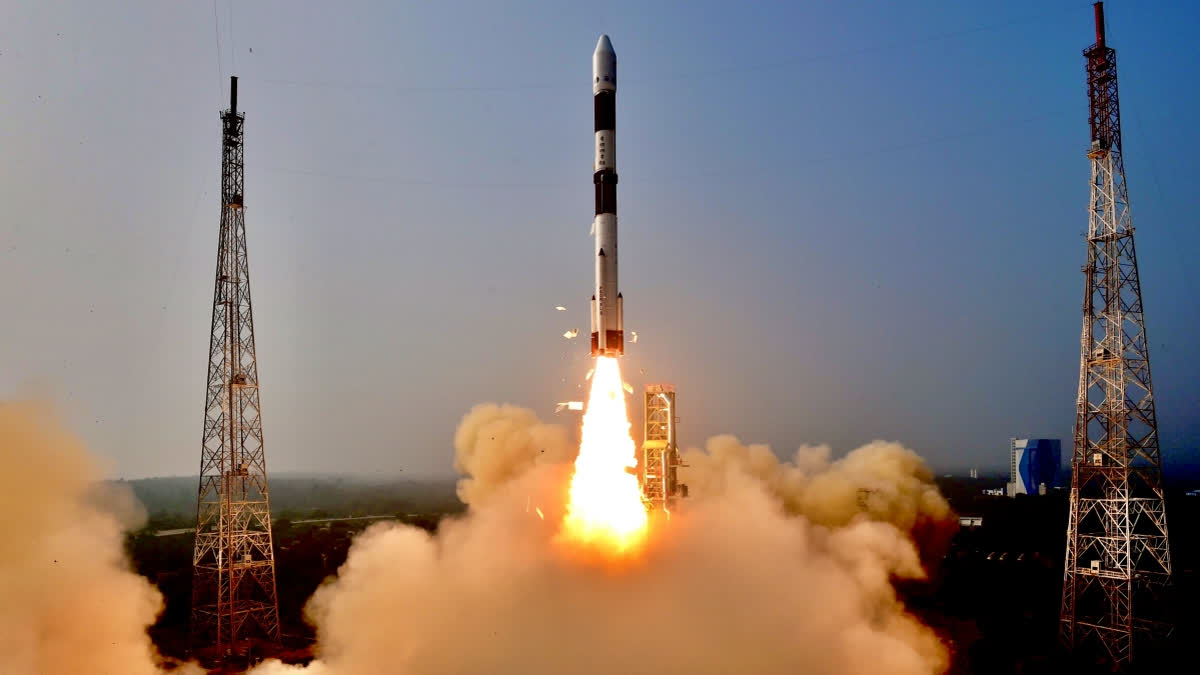Hyderabad:The year 2023 was a 'Big Bang' for Indian Space Research Organisation(ISRO) as the world witnessed India's rising prowess in the space with the triumph of soft-landing of Chandrayaan-3 to launching Aditya L1 mission, the Space agency gave several reasons to mark 2023 as the most significant year for the country.
It continued the same zeal and opened the new year 2024 on a high. On Monday, it launched XPoSat, India's first dedicated polarimetry mission to study the emission mechanism from diverse astronomical phenomena such as black holes, neutron stars, active galactic nuclei, pulsars, and nebulae, among others.
But wait, ISRO says it's just the start to the new year! There is a lot more to witness for the country and watch our space mastery rising high and high. ISRO is all set to launch three missions, poised to bring a plethora of information and insights from space, which will be valuable not only for India but for the whole world.
Three upcoming missions
1. Gaganyaan-ISRO's Gaganyaan is a crewed orbital spacecraft intended to be the formative spacecraft of the Indian Human Spaceflight Programme. The mission represents a significant leap forward in India's space capabilities.
The agency has developed a range of cutting-edge technologies, including human-rated launch vehicles and system qualifications. The mission involves approximately 20 significant tests, with three of them dedicated to crewless missions featuring the Human-Rated Launch Vehicle Mark-3 (HLVM3).
Named in Sanskrit, Gaganyaan means a craft or vehicle to the sky. The Gaganyaan mission has been developed at the cost of ₹90 billion. On the successful completion of the mission, India will join the elite list of countries comprising the Soviet Union, the US, and China, who hold the pride of sending a human into space.
The prime objective of Gaganyaan mission is to demonstrate indigenous capability to undertake human space flight missions to Low Earth Orbit(LEO). It will also lay the foundation for a sustained Indian human space exploration programme in the long run.
The mission will lead to-
- Progress towards a sustained and affordable human and robotic programme to explore the solar system and beyond.
- Advanced technology capability for undertaking human space exploration, sample return missions and scientific exploration.
- Future capability to actively collaborate in global space station development and to carry out scientific experiments of interest to the nation.
- Create a broad framework for wider academia – industry partnership in taking up development activities for national development.
- Ample scope for employment generation and human resource development in advanced science and Research and Development activities.
- Unique opportunity to inspire and excite Indian youth and steer many students toward careers in science and technology towards challenging jobs that encourage knowledge, innovation and creativity.
- The programme will strengthen international partnerships and global security through the sharing of challenging and peaceful goals. Having a vibrant human spaceflight programme can be leveraged as a potent foreign policy tool.
After the successful completion of Gaganyaan mission, ISRO's next step will focus towards achieving capability for a sustained human presence in space.
2. NISAR-NASA-ISRO Synthetic Aperture Radar (NISAR) mission is a joint collaboration between ISRO and NASA for a dual-frequency L and S-Band Synthetic Aperture Radar for earth observation.
NISAR would provide a means of disentangling highly spatial and temporally complex processes ranging from ecosystem disturbances to ice sheet collapses and natural hazards including earthquakes, tsunamis, volcanoes and landslides.
Aim and objectives of NISAR mission-
- Design, Develop and launch a Dual frequency (L and S Band) Radar Imaging Satellite.
- Explore newer application areas using L and S band microwave data, especially in natural resources mapping and monitoring;
- Estimating agricultural biomass over full duration of crop cycle;
- Assessing soil moisture; monitoring of floods and oil slicks;
- Coastal erosion, coastline changes and variation of winds in coastal waters
- Assessment of mangroves;
- Surface deformation studies due to seismic activities etc.
